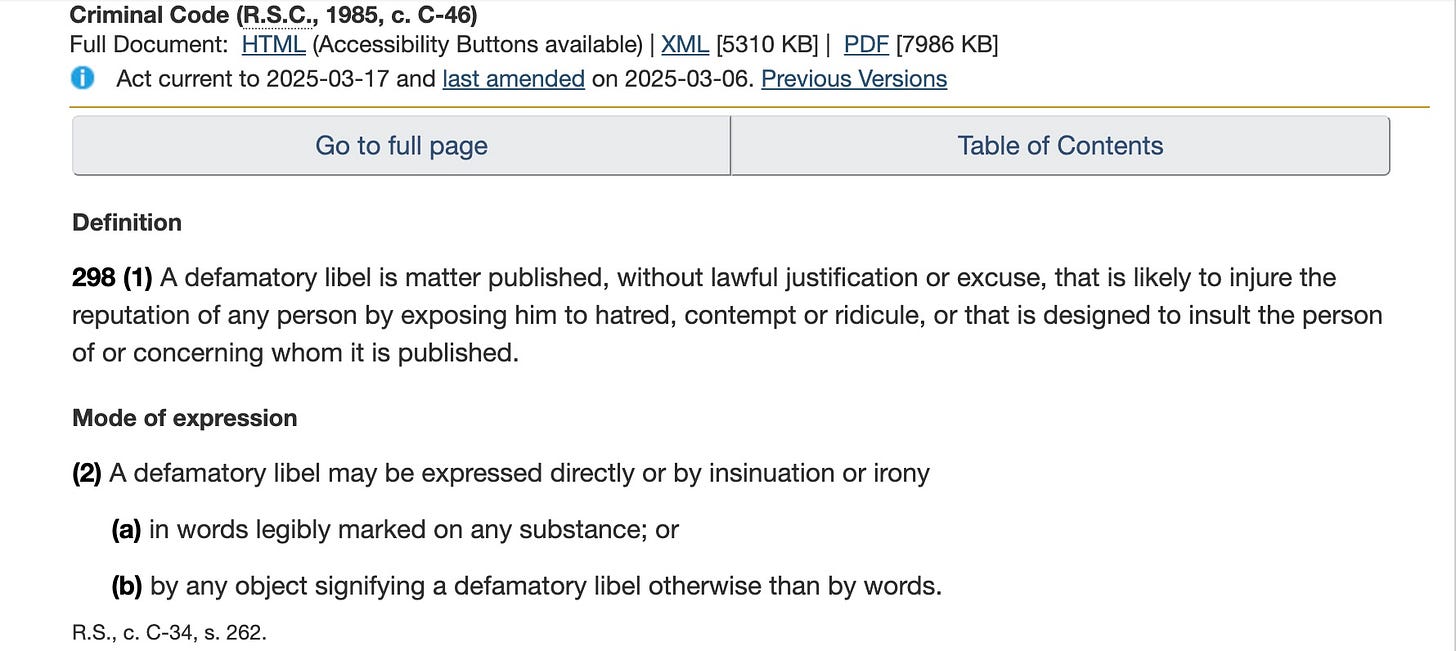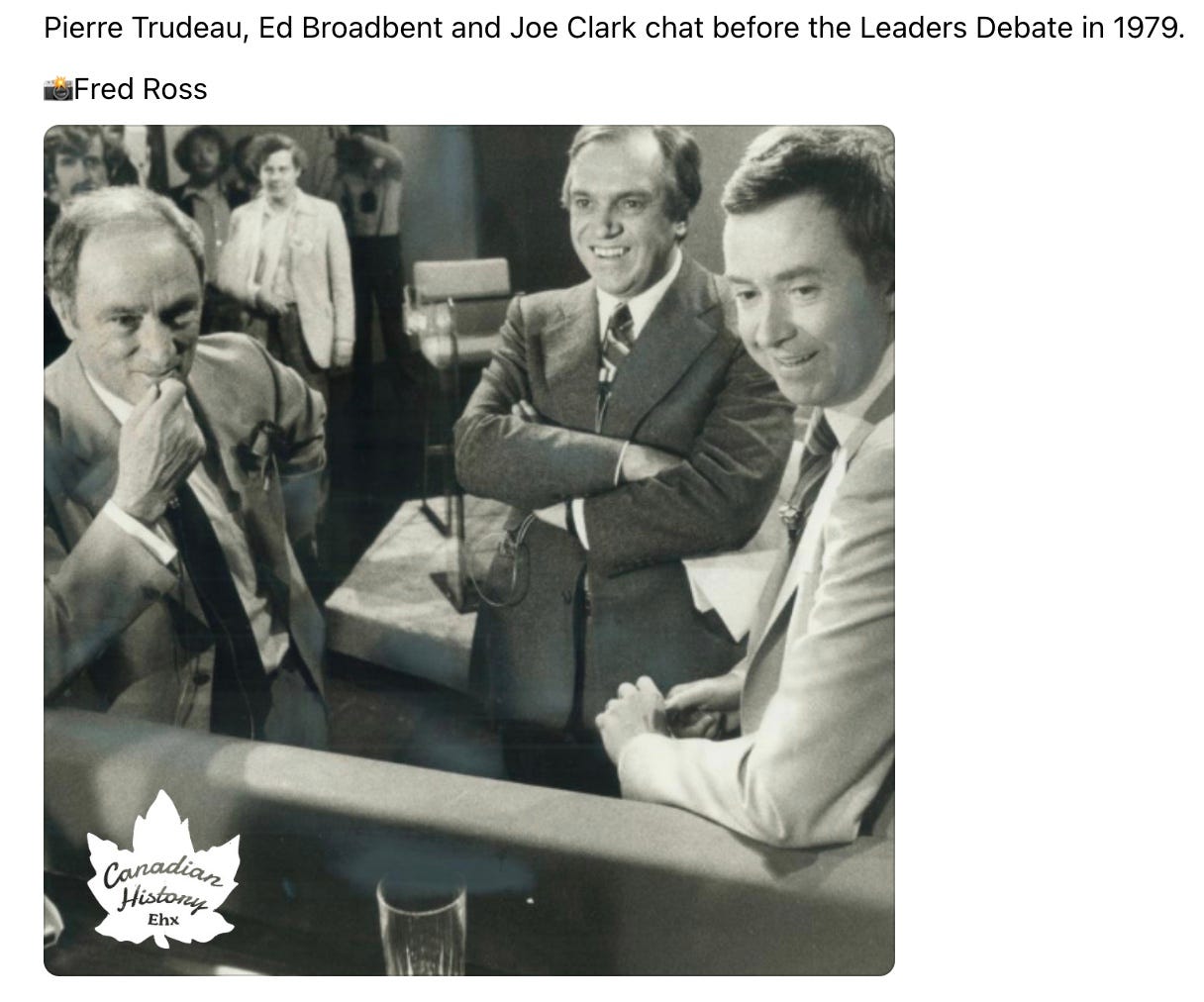Are the Liberals Okay?
in which I wonder about the mental wellness of Carney supporters and remind you about Ted Bundy and show you no one in the electoral race compares to Bundy
Ted Bundy was a sadistic sociopath who took pleasure from another human's pain and the control he had over his victims, to the point of death and even after — Anne Rule, biographer
Ted was the very definition of heartless evil, Polly Nelson — attorney on Bundy’s defense team
As a child Ted Bundy was a “mean-spirited kid” who “liked to inflict pain and suffering and fear” — Sandi Holt, childhood friend
Reader, do you think the Liberals are okay? I worry about the mental wellness of the pro Carney camp. Reader, the Libs are not okay, do you think they need an intervention?
So, reader. What can I say about this tweet? Let me begin with AYFKM?
Carney is Mother Theresa and Poilievre is Ted Bundy? Really?
I fear for the stability and soundness of the mind that came up with that comparison, reader. I fear there may be others who agree with this disturbing comparison. I fear for the psychiatric health of the nation as a whole, reader.
Reader, this sh1t is why tweeting when having a woke tantrum = unwise. Ginni Thomas’ Coup Bus deleted the tweet, I suppose she realised the foolishness of her tweet. Reader, don’t look for her, don’t mob her, leave her be, okay reader? Anyway, I felt quite unnerved by this statement and thought I would write about the recklessness that’s come to dominate progressive political discourse on the Muskosphere and elsewhere.
What does this hope to accomplish, reader? Do we all realise that we will wake up on April 29th, and face the fact that no one is going anywhere, that we will all have to coexist with those on the other side, whom we spent weeks hating on and smearing as evil and destructive blah blah blah?
Reader, let’s not regret the morning after, okay?
Anyway. Moving on.
For those unfamiliar with Bundy you can read all about him as described by a woman who survived his brutal attack — Kathy Kleiner survived Bundy’s attempt to kill her and she wrote a book about it. You can read more about the other women who survived Bundy’s attempts to kill them here.
If you still don’t feel certain you understand the what and who of Ted Bundy, here’s another taste for you, written by a Florida law enforcement officer.
On January 4, 1974, Bundy entered the apartment of 18-year-old Karen Sparks, a student at the University of Washington in Seattle. He bludgeoned her with a metal rod from her bed frame and sexually assaulted her with the same rod. She survived but was left with permanent brain damage. On February 1st, he broke into the apartment of Lynda Ann Healy, beat her unconscious, dressed her, and carried her away. Bundy later confessed that he drove her to a secluded area where he raped and murdered her before dumping her body. — David Brand, 15.5.2024
Reader, let me briefly summarise the Ted Bundy case for you.
After evading the law twice, once in 1975 in Utah for assault and kidnapping, and then again in 1978 in Colarado for two murders, Bundy moved onto Florida, where he killed again. Florida law enforcement arrested him in 1978. Eleven years later, on January 24th, 1989, Florida executed Ted Bundy for serial rape and murder via the electric chair.
Interviewers described Bundy as articulate and charming. Kathy Kleiner disagrees, reminding us that he bludgeoned many of his victims from behind or in their sleep. Bundy travelled across the United States, from Washington State to Florida, raping and murdering women along the way. It’s estimated that, between 1973 and 1978, he raped and murdered at least 30 women. Whilst he confessed to 30 murders, law enforcement confirmed him to have killed 20 women, and suspected him of at least 36 more murders. Reader, forensic evidence looking at the skeletons of some of his victims showed evidence of torture, such as severance of the head and insertion of blunt objects in the vagina (Rule, 1980 via Pedneault 2013).1
Pednaeault's scholarly research indicates that Bundy targeted women in their 20s, and that his last victim was 12 years old. Interviews reveal that Bundy dehumanised his victims, made them into objects he could attack — he saw women as images rather than persons. He described wanting to possess his victims, using vocabulary such as desired object, seizing something, material possession to describe his perception of his victims. For Bundy, killing became the ultimate way to own his victims. Florida law enforcement officer David Brand describes Bundy as one of the most vicious serial killers in modern history.
To prey upon the empathy of young women, he [Bundy] would sometimes simulate some sort of physical injury or disability asking for assistance to get close to potential victims. He would then kidnap them. This same method was depicted by the Jame Gumb character in the movie “Silence of the Lambs. — David Brand, 15.5.2024
Hervey Cleckley diagnosed Bundy as a psychopath, defined as a social predator who charm[s], manipulate[s] and ruthlessly plow[s] [his] way through life — completely lacking in conscience and feeling for others. [He] selfishly take[s] what [he] want[s] and do[es] as [he] please[s], violating social norms and expectations without the slightest sense of guilt or regret … Psychopath is a personality trait that falls under "antisocial personality disorder." People with antisocial personality disorder have a long-term pattern of violating the rights of others without any remorse.
Ted Bundy terrorised the university students and the town of Tallahassee. His notoriety lingered and hovered for a long time because of the horror of his crimes. No mentally sound or stable person would think to draw a comparison between Ted Bundy and Pierre Poilievre — it’s defamatory to suggest any comparison exists.

BTW, defamation includes online defamation, ie use of the internet to smear the target of your hatred. According to Legal Line dot ca, legal defenses for libel include the following:
Generally, a harmful statement will not amount to libel, if one of the following defences applies:
Made only to the person it is about. If it was only made to the person mentioned in the statement, and not to anyone else;
True statements. If it is actually true, and the person making the statement makes the statement honestly and not maliciously;
Absolute privilege applies to statements made in court (as evidence in a trial) or in parliament;
Qualified privilege protects statements made non-maliciously and for well-meaning reasons. For example, if an employer is requested to give a reference for an employee, and they give a statement that is their honest opinion;
Fair comment. The defence of fair comment may apply in situations where statements made were about issues of public interest, as long the comments were honest statements of opinion, based on fact. If your statements were malicious, this defence will not apply; and
Responsible communication of matters of public interest. This defence is available in libel cases. It allows journalists the ability to report statements and allegations, in cases where there is a public interest in distributing the information to a wide audience. However, this defence only applies where the news was urgent, serious and of public importance, and the journalist used reliable sources and tried to report both sides of the issue.
So, reader, comparing the leader of any political party whom you don’t like to one of the most notorious serial rapists and killers is not a true statement, not an absolute privilege, not a qualified privilege, not a fair comment, and it’s not a responsible communication of matters of public interest.
Check your sh1t before talking smack about your political opponents.
Look, reader, I’m old and I remember the party leaders who sparred in the House of Commons having friendly banter before their national leaders debate— that’s how politics works, it’s not a gladiator fight to the death, it’s a gentlemanly political face off and then shake hands afterwards.
Can we grow the fcuk up?
What has happened to us, that our discourse becomes so nasty and abusive and intentionally malicious? Did we lose self respect?
I don’t know. That’s food for thought, reader.
Anyway.
If you didn’t know whether the political sh1t talk you spew about others meets the definition of defamation, well now you have the means to assess for yourself.
Freedom of expression doesn’t mean we have free reign to maliciously smear those we do not like in ways that will injure their public standing and reputation and harm their families and careers etc. Freedom requires responsibility — the more freedom you have or take for yourself, the more responsibility you will need to exercise to keep yourself in check. Freedom does not mean absolute power to wield over others, freedom means you must exercise power over your own desires, it means self control.
Why do you think we don’t let 12 year olds vote, drive a car, get married, have sex? Because those activities require a level of maturity than enables responsibility and self control, and 12 year olds lack the developmental capacity for this stuff. Are you 12 years old, progressive Carney supporters, or are you an adult? If you behave like a 12 year old we will treat you like one. If you behave like an adult, we will treat you like one. It’s on you.
Reader, those who lack the discipline of self control cannot ever taste or have freedom. The out-of-control derangement syndrome people are not free because their recklessness holds them hostage.
It’s okay, progressives, you can support your candidate and not compare Poilievre to one of America’s most notorious rapist and serial killers. Feel free to support whom you will, without resorting to defamation.
Reader, are the Libranos okay? Much as I don’t like them, I have serious concerns about the mental well-being of the Liberals. I think they might need an intervention.
Pedneault, Amelie. “Ted Bundy on the ‘malignant being’ : An analysis of the justificatory discourse of a serial killer.” (2013).








Well, you only need to be 14 to join the Liberal Party. I’m not sure if that requirement is for chronological or mental age. Or both?